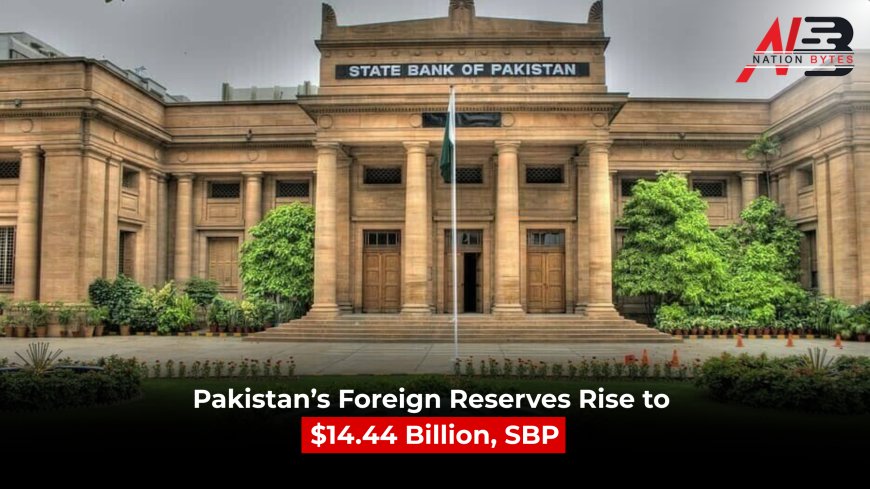Pakistan’s Foreign Reserves Rise to $14.44 Billion, SBP
Pakistan’s foreign reserves increased to $14.44 billion, showing economic stability and confidence after the IMF deal. The rise strengthens the rupee and boosts import capacity.

The State Bank of Pakistan (SBP) has reported a small but positive rise in the country’s foreign exchange reserves, showing early signs of stability in the economy.
According to the latest data shared on October 10, 2025, the reserves increased by $21 million, reaching $14.44 billion. This comes as good news for Pakistan’s financial position, especially after the recent agreement between the International Monetary Fund (IMF) and the government.
Key Highlights
-
SBP reserves up by $21 million, reaching $14.44 billion.
-
Total liquid reserves stand at $19.81 billion.
-
IMF’s $1.2 billion tranche to boost stability.
-
Rupee shows steady performance.
-
Experts expect gradual economic improvement.
Total Reserves Cross $19.8 Billion
The total foreign reserves held by Pakistan, including both the SBP and commercial banks, now stand at $19.81 billion. Out of this, commercial banks hold $5.37 billion, while the central bank keeps $14.44 billion.
Even with large external payments and debt repayments, Pakistan’s reserves have managed to grow slowly in recent weeks. In early October, the reserves were around $14.42 billion, showing that the country is gradually improving its foreign exchange position.
IMF Deal Brings Confidence
Pakistan’s economy got a confidence boost after the IMF staff-level agreement was reached. The deal will release a $1.2 billion loan, which will help strengthen the country’s financial stability and improve its image in international markets.
Experts say this loan will support Pakistan’s foreign reserves, increase investor trust, and open new doors for foreign funding. The deal also shows that Pakistan is staying on track with its economic reform program, which includes improving tax collection and controlling expenses.
“The rise in reserves shows Pakistan’s improving discipline and global trust,” said an economist from Karachi.
Why the Increase Matters
The increase in reserves is a positive sign for Pakistan’s economy. It helps the government make import payments, manage external debts, and control the exchange rate.
Recent improvements in the rupee’s value, lower current account deficit, and inflows from friendly countries have also supported this growth.
At the same time, the State Bank’s monetary policies including keeping the currency stable and reducing speculation—have helped build market confidence.
Future Outlook
Experts believe the reserves could rise further in the coming months if Pakistan continues reforms and receives more international support.
The upcoming IMF loan will act as a financial cushion for the country. It may also encourage other countries and investors to provide additional funding.
However, to keep the reserves stable in the long term, Pakistan must increase exports, bring in more remittances, and reduce unnecessary imports.
Import Cover and Next Steps
At the current level, the reserves provide around two months of import cover. Although this is still below the ideal level of three months, it marks an improvement.
The government aims to further strengthen reserves to protect the economy from external shocks and keep the rupee stable.
A Finance Ministry official said, “We want reserves that are not just growing for a short time but can support Pakistan’s economy for the long run.”
Market Response
After the announcement, investor confidence improved slightly. The Pakistan Stock Exchange (PSX) also saw small gains, especially in banking and financial sector stocks.
Market experts believe that if reserves continue to rise and the economy remains stable, investor interest will grow even more.

 Mohammad Adil
Mohammad Adil